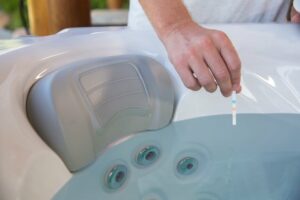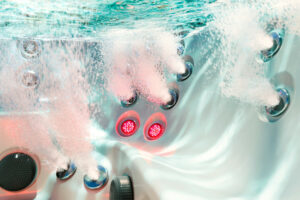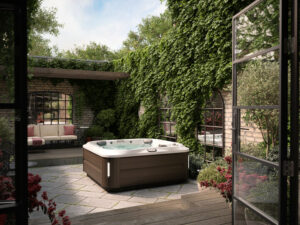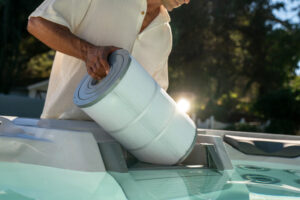Site Prep for a New Spa
While we like to tout the many benefits of hot tubs as simple alternatives to pool ownership (among other things), this does not mean that you should expect to be able to just have a spa delivered without the proper planning or preparation for set-up. There are really two factors at play that must be in place before a spa can be installed: pad prep and electrical prep.
The Pad
The pad is the surface where the hot tub will be located. It is critical that a pad be level, not located underneath any power lines, and is designed able to support a spa that will weigh over 2,000 pounds when full. The best long-term option for an outdoor hot tub pad is a concrete slab or pavers measuring at least 4 inches thick and rated to support 120 pounds per square foot. It is recommended that you have a contractor install your pad and make sure it is completely dry before your hot tub is delivered and installed.
Another thing to consider about your pad is what will go around it. It is always a good idea to design enough space around your spa for a clean walkway or deck area around the tub for steps or and so you have a place to take off flip flops or shoes so you don’t track dirt into your nice clean hot tub.
The Electric
Hot tubs, depending on the size, will have differing electrical requirements. While some of the smaller units can run off of a standard 110v power source, all will require their own dedicated sources. One electrical requirement that all spas have in common is the need for a GFCI disconnect five-seven feet away from the waters edge location within visible sight that is easily accessible for service technicians. Many municipalities and even HOA’s will also have their own unique set of building codes that govern hot tub installation so make sure to do your research.
Like any home improvement project, a hot tub installation requires critical planning and preparation to make sure that you are safeguarding your investment.
Share this blog post!
Hours
Mon – Sat: 10:00 AM – 6:00 PM
Sun: 12:00 PM – 5:00 PM
Appointments: Anytime
© 2024 Imagine Backyard Living All rights reserved. Made with by IMP Digital







